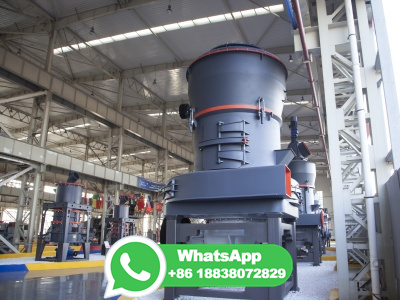
The Bergius process is a simple process for converting brown coal completely into crude oil in the presence of certain catalysts. The brown coal is known as lignite. The initial catalyst for brown co...
WhatsApp: +86 18838072829
One of the main methods of direct conversion of coal to liquids by hydrogenation process is the Bergius process, developed by Friedrich Bergius in 1913. In this process, dry coal is mixed with heavy oil recycled from the process. Catalyst is typically added to the mixture. The reaction occurs at between 400 °C (752 °F) to 500 °C (932 °F ...
WhatsApp: +86 18838072829
BergiusIG Hydroliquefaction Process. The Bergius process was operated very successfully in Germany before and during World War II and was a twostage process . Even though the process is currently not in use, it has contributed immensely to the development of catalytic coal liquefaction technology.
WhatsApp: +86 18838072829
The middle oil is hydrogenated in order to get more gasoline and the heavy oil is mixed with the coal again and the process restarts. In this way, heavy oil and middle oil fractions are also reused in this process. The most recent evolution of Bergius' work is the 2stage hydroliquefaction plant at Wilsonville AL which operated during 198185.
WhatsApp: +86 18838072829
In the present paper, a brief description of the Bergius process for coal liquefaction and its application to petroleum based products is proposed. The role of catalysts will be examined in the light of expected functions and underlying mechanisms. Criteria for selecting potential active phases will be proposed.
WhatsApp: +86 18838072829
Coal resources have been used to produce liquid transportation fuels by several process routes, collectively referred to as coal liquefaction or, more generally stated, as Coal to Liquids (CTL). Early records of coal conversion to liquid fuel date to 1913 and an extraction process developed by Friedrich Bergius in Germany [ 7 ].
WhatsApp: +86 18838072829
Effect of Coal Characteristics and Molybdenum Sulfide Catalyst on Conversions and Yields of Heavy Products from Liquefaction in Phenanthrene. Energy Fuels 1996, 10 (3), 718725.
WhatsApp: +86 18838072829
I would recommend Bergius process, coal liquefaction, or synthgas methanation as alternatives to traditional crude oil processing. The biooptions also look great, and most people probably end up using algae or arboretums for their first plastic anyway. That said, the default of oil processing is fine; you still get some natural gas, some ...
WhatsApp: +86 18838072829
Quick Reference. A process for making hydrocarbon mixtures (for fuels) from coal by heating powdered coal mixed with tar and iron (III) oxide catalyst at 450°C under hydrogen at a pressure of about 200 atmospheres. In later developments of the process, the coal was suspended in liquid hydrocarbons and other catalysts were used. The process was ...
WhatsApp: +86 18838072829
4. Thermal conversion. The action of heat to break down complex feed materials is found in various processes ranging from pyrolysis to catalytic liquefaction. All of these processes involve thermal cracking of the feed material, which can be biomass, coal or organic waste.
WhatsApp: +86 18838072829
The Bergius process is a method of production of liquid hydrocarbons for use as synthetic fuel by hydrogenation of highvolatile bituminous coal at high temperature and pressure. It was first developed by Friedrich Bergius in 1913. In 1931 Bergius was awarded the Nobel Prize in Chemistry for his development of high pressure chemistry.
WhatsApp: +86 18838072829
The Bergius process is a method of production of liquid hydrocarbons for use as synthetic fuel by hydrogenation of highvolatile bituminous coal at high temperature and pressure. It was first developed by Friedrich Bergius in 1913. In 1931 Bergius was awarded the Nobel Prize in Chemistry for his development of highpressure chemistry. [1] Process
WhatsApp: +86 18838072829
Engineering Chemistry Questions and Answers Synthetic Gasoline from NonPetroleum Sources 2. This set of Engineering Chemistry Questions Answers for Exams focuses on "Synthetic Gasoline from NonPetroleum Sources 2". 1. Which type of coal is used in Bergius process? a) Anthracite coal. b) Steam coal.
WhatsApp: +86 18838072829
Bergius Direct Liquefaction In the early 20th century, German researcher Friedrich Bergius developed a process to directly liquefy coal under high temperature and pressure (coal begins to dissolve above 250 degrees centigrade), and then "crack" the coal molecules into smaller molecules using Bergius termed the process "coal ...
WhatsApp: +86 18838072829
The first commercially available liquefaction process was the Bergius process, developed in Germany as early as 1911 but brought to commercial scale during World War I. This involves mixing coal in an oil recycled from a previous liquefaction run and then reacting the mixture with hydrogen under high pressures ranging from 200 to 700 atmospheres.
WhatsApp: +86 18838072829
The preparation of liquid fuels from solid coal is known as hydrogenation of coal this gasoline is known as synthetic petrol. Bergius Process Direct method: Input : Powdered coal + Ni Oleate catalyst + Heavy oil are made into paste + H 2. Heating in : 400 450°C. Pressure : 200250atm. Process: Powdered coal is converted into gasoline.
WhatsApp: +86 18838072829
In 192830 and 193744, the Bureau had experimented with coal hydrogenation, the fundamental process that Germany's Frederick Bergius had first discovered in 1921. Read more about the origins of the Bergius process.
WhatsApp: +86 18838072829
The other three reactions indicates the Bergius process or hydrogenation of coal. 9. What is the catalyst used in Bergius process? a) nickel oleate b) phosphoric acid c) zirconium oxide d) aluminum oxide View Answer. Answer: a Explanation: In Bergius process the catalyst used is Nickel oleate. In this process the low ash coal is finely powdered ...
WhatsApp: +86 18838072829
Historic Outline of the BergiusPier Process Germany is rich in coal but has only very small petroleum resources. This made conversion of coal into petroleum products of interest. The first syste matic studies of coal liquefaction at high hydrogen pressure were conducted by F. Bergius (), Figure 1.
WhatsApp: +86 18838072829
brown coal resource. The introduction of the Haber ... This was the Bergius Process and its discoverer, Friedrich Bergius, was awarded the Nobel Prize in 1931. Bergius was led to this effort by ...
WhatsApp: +86 18838072829
Friedrich Karl Rudolf Bergius (German pronunciation: [ˈfʁiːdʁɪç ˈbɛʁɡi̯ʊs] ⓘ, 11 October 1884 30 March 1949) was a German chemist known for the Bergius process for producing synthetic fuel from coal, Nobel Prize in Chemistry (1931, together with Carl Bosch) in recognition of contributions to the invention and development of chemical highpressure methods.
WhatsApp: +86 18838072829
For coal, the Bergius process, using temperatures of 450500 °C and hydrogen pressures of several 100 bar, is a viable alternative to steam reforming, resulting directly in the formation of ...
WhatsApp: +86 18838072829
Coal to Liquids Technologies Marianna Asaro1, Ronald M. Smith2 and ... provide the process intermediate synthesis gas, or syngas, a mixture of primarily CO (carbon monoxide) and H ... the Bergius process DCL plants were chosen in 1939 when Germany expanded production during the Second World War, because these were further developed.
WhatsApp: +86 18838072829
A process for making hydrocarbon mixtures (for fuels) from coal by heating powdered coal mixed with tar and iron(III) oxide catalyst at 450°C under hydrogen at a pressure of about 200 atmospheres. In later developments of the process, the coal was suspended in liquid hydrocarbons and other catalysts were used. The process was developed by Friedrich Bergius during World War I as a source of ...
WhatsApp: +86 18838072829
Bergius and Bosch were instrumental in developing the hydrogenation method necessary to convert coal dust and hydrogen directly into gasoline and lubricating oils without isolating
WhatsApp: +86 18838072829
One of the main methods of direct conversion of coal to liquids by hydrogenation process is the Bergius process, developed by Friedrich Bergius in 1913. In this process, dry coal is mixed with heavy oil recycled from the process. A catalyst is typically added to the mixture.
WhatsApp: +86 18838072829
The Bergius process is a simple process for converting brown coal completely into crude oil in the presence of certain catalysts. It is a method of production of liquid hydrocarbons for use as synthetic fuel by hydrogenation of highvolatile bituminous coal at high temperature and pressure.
WhatsApp: +86 18838072829
Now syngas is a mixture of hydrogen and carbon monoxide. Synthetic petrol is mainly obtained from a process called Bergius process. In the Bergius process, hydrogen gas and coal are heated together which produces a mixture of hydrocarbons through the process of hydrogenation. The general reaction involved in this process is,
WhatsApp: +86 18838072829
Bergius process. [ ′ber·gē·əs ′präs·əs] (chemical engineering) Treatment of carbonaceous matter, such as coal or cellulosic materials, with hydrogen at elevated pressures and temperatures in the presence of a catalyst, to form an oil similar to crude petroleum. Also known as coal hydrogenation.
WhatsApp: +86 18838072829
Bergius Process Synthetic Petrol: In this process, the finely powdered coal is completed keen on a paste through heavy oil and a catalyst powder (tin or nickel oleate) is mixed with it. The paste is pumped along with hydrogen gas into the converter, where the synthetic paste is heated to 400 450°C under a pressure of 200 250 atm.
WhatsApp: +86 18838072829
It has coal reserves of million tons of coal and a market cap of million, producing of value for each ton of reserves. Now, consider Sunoco, Inc., it has no oil reserves and ...
WhatsApp: +86 18838072829